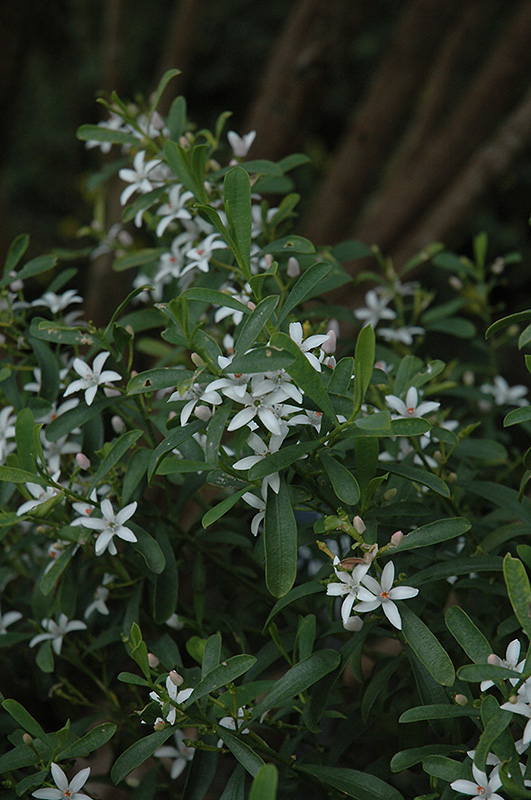Height: 5 feet
Spread: 5 feet
Sunlight:
![]()
![]()
Hardiness Zone: 7b
Other Names: Eriostemon myoporoides
Description:
Until recently this variety was known as Eriostemon myoporoides; a hardy compact shrub with a profusion of white flowers in late winter, early spring; aromatic leaves carry an apple scent; tolerates frost and dry periods; responds well to pruning
Ornamental Features
Long Leaf Waxflower has masses of beautiful white star-shaped flowers along the branches from late winter to early spring, which emerge from distinctive shell pink flower buds, and which are most effective when planted in groupings. The flowers are excellent for cutting. It has dark green evergreen foliage. The fragrant narrow leaves remain dark green throughout the winter.
Landscape Attributes
Long Leaf Waxflower is a multi-stemmed evergreen shrub with a mounded form. Its relatively fine texture sets it apart from other landscape plants with less refined foliage.
This is a relatively low maintenance shrub, and should only be pruned after flowering to avoid removing any of the current season's flowers. It is a good choice for attracting bees and butterflies to your yard, but is not particularly attractive to deer who tend to leave it alone in favor of tastier treats. It has no significant negative characteristics.
Long Leaf Waxflower is recommended for the following landscape applications;
- Accent
- Mass Planting
- General Garden Use
Planting & Growing
Long Leaf Waxflower will grow to be about 5 feet tall at maturity, with a spread of 5 feet. It tends to fill out right to the ground and therefore doesn't necessarily require facer plants in front, and is suitable for planting under power lines. It grows at a medium rate, and under ideal conditions can be expected to live for approximately 30 years.
This shrub does best in full sun to partial shade. It does best in average to evenly moist conditions, but will not tolerate standing water. It may require supplemental watering during periods of drought or extended heat. It is not particular as to soil type or pH, and is able to handle environmental salt. It is somewhat tolerant of urban pollution. This species is not originally from North America.


